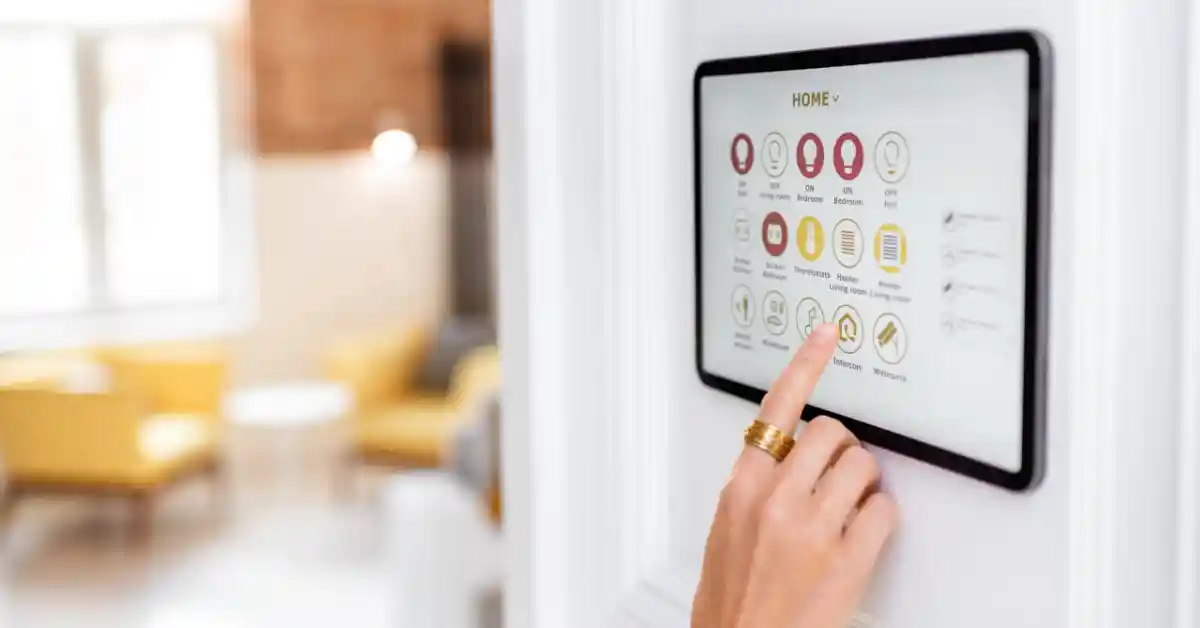Introduction: The Shift to Intelligent Homes
Smart homes are no longer just about gadgets; they’re about intelligence. In 2025, automation and artificial intelligence (AI) have become central to home security. Instead of reacting after a break-in or emergency, AI-driven systems anticipate risks, prevent threats, and make security effortless for homeowners.
From voice-controlled locks and automated lighting to AI-powered cameras that distinguish between pets and intruders, automation and AI are redefining how homes stay safe, efficient, and connected.
What Is Automation & AI in Home Security? (Quick Answer)
Automation in home security refers to systems that perform safety tasks automatically, while AI analyzes data to detect patterns, recognize threats, and reduce false alarms.
Examples include:
- Automating lights to turn on at sunset.
- AI cameras that recognize familiar faces.
- Smart thermostats that detect unusual temperature drops, indicating a fire or broken system.
- Security hubs that create routines (lock doors, arm alarms, turn off appliances) with a single voice command.
How Automation Improves Home Safety
Automation adds layers of protection by making security tasks consistent and effortless:
- Smart lighting: Timed lights simulate occupancy to deter burglars.
- Auto-lock doors: Locks engage automatically when you leave.
- Sensor-based triggers: Motion at night can activate cameras, sirens, or exterior lights.
- Geofencing: Systems arm/disarm based on your phone’s location.
These features eliminate the human error of forgetting to lock doors or arm an alarm.
Role of AI in Home Security
AI takes monitoring and analysis beyond human capability. Key uses in 2025 include:
- Facial recognition: Identifies known family members, friends, or frequent visitors.
- Smart alerts: Differentiate between a pet moving indoors and an intruder.
- Anomaly detection: Recognizes unusual activity (e.g., a window opening at an odd hour).
- Predictive analytics: AI can recommend upgrades based on common local threats (e.g., flood sensors in flood-prone regions).
AI reduces false alarms, speeds up emergency responses, and creates smarter data for insurers.
Insurance Savings Through AI-Driven Systems
Homeowners installing AI-powered devices often qualify for higher discounts than those with basic security systems. Why? Because AI reduces false alarms and improves threat detection, it makes homes statistically safer.
- Discount range: 8–15% on premiums.
- Device examples: AI cameras, leak detectors, smart smoke alarms.
- Insurer partnerships: Companies increasingly work with brands like Google Nest, Ring, and Arlo to validate AI-driven data.
Example: A homeowner with a $2,400 annual premium could save $300 annually by using AI-integrated monitoring, effectively offsetting system costs within 3–4 years.
Best Automation & AI Devices in 2025
Automation Devices
- Philips Hue Smart Lighting: Automated schedules and geofencing.
- August Wi-Fi Smart Lock: Auto-locking and guest access management.
- Samsung SmartThings Hub: Central hub for automation routines.
AI Devices
- Arlo Pro 5S Camera: AI motion detection with package and person recognition.
- Google Nest Cam IQ: Facial recognition and smart alert filtering.
- Ecovent Smart HVAC Sensors: AI-driven temperature optimization with hazard detection.
Real-World Examples
- AI Prevents False Alarms: A Denver family reduced false alarms by 80% after switching to AI cameras that distinguish between pets and humans.
- Automated Lighting Deters Crime: In Atlanta, automated lighting schedules helped prevent a burglary when the house appeared occupied while the owners were on vacation.
- Predictive AI Saves Thousands: In Houston, an AI-driven leak detector prevented $12,000 in water damage by alerting homeowners within minutes of a pipe burst.
Challenges & Limitations
- Privacy concerns: Facial recognition raises data storage and privacy issues.
- Cybersecurity risks: Connected AI systems can be vulnerable to hacking.
- Costs: AI-driven systems range from $1,000–$3,000 for full setups.
- Complexity: Automation routines require initial setup and technical understanding.
- Reliance on internet/cloud: Power or Wi-Fi outages can limit functionality without backups.
Who Benefits Most from Automation & AI?
- Frequent travelers: Automated systems handle routines in your absence.
- Families with kids or seniors: AI adds safety through real-time monitoring and alerts.
- High-crime neighborhoods: Automation deters burglars with lights, locks, and alarms.
- Eco-conscious homeowners: AI optimizes energy use while maintaining safety.
Tips for Homeowners in 2025
- Choose devices with local storage options to reduce privacy risks.
- Look for systems with cellular backup in case of Wi-Fi failure.
- Update software regularly to prevent hacks.
- Combine automation with manual controls for flexibility.
- Confirm insurance discounts before purchase to maximize ROI.
Key Takeaways
- Automation handles tasks automatically, while AI improves decision-making and detection.
- Together, they lower risks, prevent false alarms, and improve security efficiency.
- Insurance companies recognize AI-driven devices with higher discounts.
- Costs can be high upfront, but pay off through savings and risk reduction.
- Privacy and cybersecurity remain the biggest challenges.




